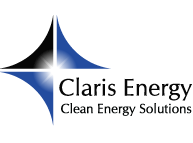 If you are in the manufacturing business, then you already know how improving your production process as you deal with low profit and budget constraints can quickly send your operations into a downward spiral. Before any new manufacturing process can be implemented, a good deal of research and development must first take place. And that research and development can be rewarded with a tax incentive.
If you are in the manufacturing business, then you already know how improving your production process as you deal with low profit and budget constraints can quickly send your operations into a downward spiral. Before any new manufacturing process can be implemented, a good deal of research and development must first take place. And that research and development can be rewarded with a tax incentive.
The R&D tax credit rewards manufacturing companies who choose to maintain their edge on the competition via research and development. This incentive has been used by large companies for many years, with the incentive becoming more generous through the decades. Yet, those businesses that are small to medium in size are often unaware how easy it is to actually qualify for it, and so it continues to not be taken advantage of.
Check Every Year for Eligibility
Some business owners believe that if they didn’t qualify for the R&D tax incentive before, that they may not qualify currently. But this is not necessarily the case. The documentation requirements were modified by the U.S. Treasury in 2003. This changed the definition of what activities would qualify a company for the tax incentive. Now, any research and development that is new to a business can qualify for the incentive. Before, only research and development that was new to the marketplace would qualify.
A business can also claim the R&D tax incentive for any open tax years, which can mean one or more decades and many thousands of dollars for a business.
What Kinds Of Manufacturing Companies Can Benefit From the R&D Tax Incentive?
There are various businesses in the manufacturing industry that can receive the research and development tax incentive. These include plastic injection molding companies, machine shops, apparel and textiles businesses and software companies.
Self-Censorship Can Slow Growth
Even though this incentive is one of the most generous of its kind to be offered by Congress, self-censorship has caused its under-use. But there is another side effect of self-censorship, and that is the slowed growth of the economy. When a company thinks there is no incentive for research and development, it is less likely to occur. Thus, innovation and job growth are stifled. This doesn’t benefit the country’s economy. But when the credit is taken advantage of, new jobs can be added and layoffs completely prevented, which means steady employment for more citizens. This says a lot, considering that seventy percent of jobs in the U.S. come from mid-sized businesses.
The government provides around ten billion dollars in R&D incentives each year for every level of business. This alone makes it worth it for businesses to research the incentive further. The return a business can receive from the R&D incentive can be further complemented by the EPAct 179D if green construction of a new building has occurred, and that building is currently in use. It definitely pays to review eligibility for credit from the government each and every year.
Steve Nanos
Latest posts by Steve Nanos (see all)
- LED Lighting – A Great EPAct 179D Qualification Possibility - February 3, 2015
- 45L Credit Requirements for Begun Constructions - January 29, 2015
- Can Section 179D Incentives Help Businesses Save a Lot of Money? - January 27, 2015

 609.275.8484
609.275.8484